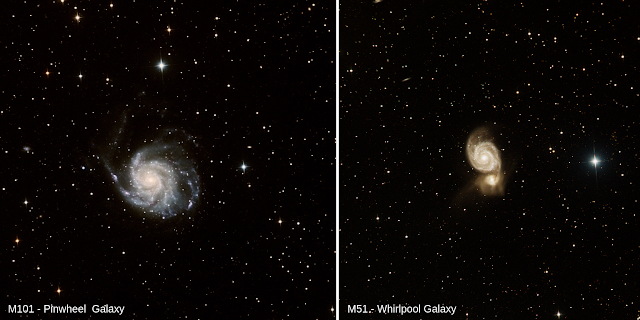Eta Aquarid Meteor Shower
Grab a blanket or a comfy lounge chair to sit back, relax and watch the Eta Aquarids meteor shower, one of two annual showers caused by dust particles from Halley's Comet. Catch the peak of the dazzling show before dawn on May 6th. The approximate peak rate is 10-30 per hour, but meteors should be visible from April 24th through May 20th. Look for meteors appearing to radiate from the constellation Aquarius.
 |
| M97 - The "Owl Nebula - Planetary Nebula in Ursa Major. - Imaged on ATEO-1 by Joe Masi. |
Four Big Planetary Nebulae
Use a 6" or larger telescope and an Oxygen-III filter to catch nice views of four relatively large planetary nebulae in May skies. See the "Ghost of Jupiter," NGC 3242 in Hydra; M97, "the Owl Nebula" in the Big Dipper; NGC 4361 in Corvus, and the famous "Ring Nebula", M57 in Lyra just a few degrees from the bright star Vega. To help you locate these objects, use the Orion DeepMap 600.
New Moon, Dark Skies
Take advantage of the dark skies provided by the New Moon on May 4th to scope out the many star clusters, galaxies and other deep-sky gems on display. Pack up your astronomy gear using our full line of telescope and accessory cases and head to a dark sky site for the best viewing conditions.
 |
| M13 and M3 were imaged on ATEO-1 by students from Plymouth South Elementary School, Plymouth, MA. |
Five Glittering Globulars
Five picture-perfect examples of globular star clusters will be visible in May skies. Check out M3 in the constellation Bootes. M13, the "Great Cluster in Hercules" will be visible near the zenith. M5 can be found in Serpens and M92 in the northern section of Hercules. Be sure to track down M4 (NGC 6121) in Scorpius on May 27th, as it will be in a great position for telescopic study throughout the night, reaching zenith around midnight. Big telescopes will provide the best views, but even a pair of humble 50mm or larger binoculars will show you these dense balls of stars from a dark sky site.
 |
| M101 and M51 were imaged on ATEO-1 by students from the Astro Club at Sacred Heart High School in Kingston, MA. |
Four Face-On Spirals
Use a large telescope to see the classic pinwheel shapes of galaxies M51 and M101 in the Big Dipper asterism of Ursa Major, and M99 and M100 in the Virgo galaxy cluster. There are also dozens of additional galaxies to explore in the Virgo cluster with a large-aperture telescope.
May's Challenge Object
May skies present some of the best opportunities to grab a view of Omega Centauri - the brightest globular star cluster in the sky! While it's big and bright, even visible as a "fuzzy" star in binoculars, the challenge Omega Centauri presents is its low position in southern skies, which can make it unobservable from higher northern latitudes. If you're having trouble locating the famous globular cluster, Bruce McClure from EarthSky.org suggests letting the sparkling blue-white star Spica help you. He explains that when Spica climbs highest up for the night, so does Omega Centauri - look for it 35 degrees directly below Spica.

No comments:
Post a Comment